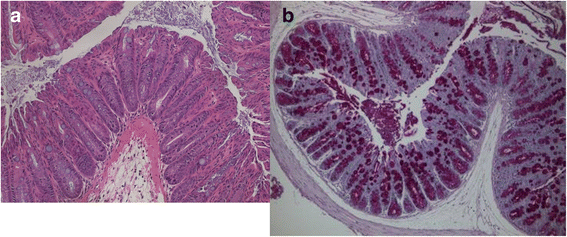Could Mycobacterium avium subspecies paratuberculosis cause Crohn's disease, ulcerative colitis…and colorectal cancer?
- PMID: 29308085
- PMCID: PMC5753485
- DOI: 10.1186/s13027-017-0172-3
Could Mycobacterium avium subspecies paratuberculosis cause Crohn's disease, ulcerative colitis…and colorectal cancer?
Abstract
Infectious agents are known causes of human cancers. Schistosoma japonicum and Schistosoma mansoni cause a percentage of colorectal cancers in countries where the respective Schistosoma species are prevalent. Colorectal cancer is a complication of ulcerative colitis and colonic Crohn's disease, the two main forms of idiopathic inflammatory bowel disease (IIBD). Mycobacterium avium subspecies paratuberculosis (MAP), the cause of a chronic intestinal disease in domestic and wild ruminants, is one suspected cause of IIBD. MAP may therefore be involved in the pathogenesis of IIBD-associated colorectal cancer as well as colorectal cancer in individuals without IIBD (sporadic colorectal cancer) in countries where MAP infection of domestic livestock is prevalent and MAP's presence in soil and water is extensive. MAP organisms have been identified in the intestines of patients with sporadic colorectal cancer and IIBD when high magnification, oil immersion light microscopy (×1000 total magnification rather than the usual ×400 total magnification) is used. Research has demonstrated MAP's ability to invade intestinal goblet cells and cause acute and chronic goblet cell hyperplasia. Goblet cell hyperplasia is the little-recognized initial pathologic lesion of sporadic colorectal cancer, referred to as transitional mucosa, aberrant crypt foci, goblet cell hyperplastic polyps or transitional polyps. It is the even lesser-recognized initial pathologic feature of IIBD, referred to as hypermucinous mucosa, hyperplastic-like mucosal change, serrated epithelial changes, flat serrated changes, goblet cell rich mucosa or epithelial hyperplasia. Goblet cell hyperplasia is the precursor lesion of adenomas and dysplasia in the classical colorectal cancer pathway, of sessile serrated adenomas and serrated dysplasia in the serrated colorectal cancer pathway, and of flat and elevated dysplasia and dysplasia-associated lesions or masses in IIBD-associated intestinal cancers. MAP's invasion of intestinal goblet cells may result in the initial pathologic lesion of IIBD and sporadic colorectal cancer. MAP's persistence in infected intestines may result in the eventual development of both IIBD-associated and sporadic colorectal cancer.
Keywords: Aberrant foci; Adenomas; Cancerization; Carcinomas; Goblet; Infection; Inflammatory bowel disease; Serrated; Transitional mucosa.
Conflict of interest statement
Not applicable.Not applicable.The author declares that no competing interests exist.Springer Nature remains neutral with regard to jurisdictional claims in published maps and institutional affiliations.
Figures

Similar articles
-
Targeted next-generation sequencing supports serrated epithelial change as an early precursor to inflammatory bowel disease-associated colorectal neoplasia.Hum Pathol. 2021 Jun;112:9-19. doi: 10.1016/j.humpath.2021.03.002. Epub 2021 Mar 13. Hum Pathol. 2021. PMID: 33727167 Free PMC article.
-
Colorectal dysplasia in chronic inflammatory bowel disease: a contemporary consensus classification and interobserver study.Hum Pathol. 2023 Aug;138:49-61. doi: 10.1016/j.humpath.2023.05.008. Epub 2023 May 27. Hum Pathol. 2023. PMID: 37247824
-
Morphological, immunohistochemical and molecular features of inflammatory bowel disease associated colorectal carcinoma and associated mucosal lesions - Single institution experience.Pathol Res Pract. 2019 Apr;215(4):730-737. doi: 10.1016/j.prp.2019.01.010. Epub 2019 Jan 11. Pathol Res Pract. 2019. PMID: 30679085
-
Paratuberculosis: A Potential Zoonosis and a Neglected Disease in Africa.Microorganisms. 2020 Jul 5;8(7):1007. doi: 10.3390/microorganisms8071007. Microorganisms. 2020. PMID: 32635652 Free PMC article. Review.
-
Baseballs, tennis balls, livestock farm manure, the IDH1 mutation, endothelial cell proliferation and hypoxic pseudopalisading (granulomatous) necrosis: Mycobacterium avium subspecies paratuberculosis and the epidemiology, cellular metabolism and histology of diffuse gliomas, including glioblastoma.Open Vet J. 2019 Apr;9(1):5-12. doi: 10.4314/ovj.v9i1.2. Epub 2019 Jan 22. Open Vet J. 2019. PMID: 31086759 Free PMC article. Review.
Cited by
-
Relevance of inducible nitric oxide synthase for immune control of Mycobacterium avium subspecies paratuberculosis infection in mice.Virulence. 2020 Dec;11(1):465-481. doi: 10.1080/21505594.2020.1763055. Virulence. 2020. PMID: 32408806 Free PMC article.
-
Association between High Interferon-Gamma Production in Avian Tuberculin-Stimulated Blood from Mycobacterium avium subsp. paratuberculosis-Infected Cattle and Candidate Genes Implicated in Necroptosis.Microorganisms. 2023 Jul 15;11(7):1817. doi: 10.3390/microorganisms11071817. Microorganisms. 2023. PMID: 37512987 Free PMC article.
-
Mycobacterium paratuberculosis: A HERV Turn-On for Autoimmunity, Neurodegeneration, and Cancer?Microorganisms. 2024 Sep 13;12(9):1890. doi: 10.3390/microorganisms12091890. Microorganisms. 2024. PMID: 39338563 Free PMC article. Review.
-
RNA-sequencing studies suggest that microRNAs and alternative splicing of pre-mRNAs modulate immune and inflammatory responses in Holstein cattle infected with Mycobacterium avium subsp. paratuberculosis.Front Immunol. 2025 Jun 25;16:1597736. doi: 10.3389/fimmu.2025.1597736. eCollection 2025. Front Immunol. 2025. PMID: 40636120 Free PMC article. Review.
-
Identification of loci associated with pathological outcomes in Holstein cattle infected with Mycobacterium avium subsp. paratuberculosis using whole-genome sequence data.Sci Rep. 2021 Oct 11;11(1):20177. doi: 10.1038/s41598-021-99672-4. Sci Rep. 2021. PMID: 34635747 Free PMC article.
References
-
- Kuper H, Adami HO, Trichopoulos D. Infections as a major preventable cause of human cancer. J Intern Med. 2000;248:171–183. - PubMed
-
- Lax AJ, Thomas W. How bacteria could cause cancer: one step at a time. Trends Microbiol. 2002;10:293–299. - PubMed
-
- Vennervald BJ, Polman K. Helminths and malignancy. Parasite Immunol. 2009;31:686–696. - PubMed
-
- Clarke CJ. The pathology and pathogenesis of paratuberculosis in ruminants and other species. J Comp Pathol. 1997;116:217–261. - PubMed
LinkOut - more resources
Full Text Sources
Other Literature Sources

